
No matter what your content marketing strategy is, keyword research is the fuel.
Keywords inform marketers as to what their audience strives to know, let them monitor their competition, and offer a constant source of content ideas.
Now, the approach to keyword research is different from what it was even a couple of years ago. Search engines are becoming smarter and keyword research tools are getting more advanced. The web is getting to be a better place after all.
Just as the SEO world is changing, so should we. Here are three SEO trends quickly reshaping the keyword research concept and with it the way we brainstorm, create, and optimize content.
1. Being in first place is no longer enough
This is the trickiest and one of the most frequent questions when it comes to keyword research. How much traffic is that top Google position going to bring? Is it worth the trouble?
The short answer: It’s more complicated than it ever was. Search engine results pages provide less visibility than they once did and that should factor into your keyword optimization process.
Search engine results provides less visibility to links than they did, says @SEOSmarty. #SEO Click To Tweet
If you want to invest the time and effort into ranking first, here are resources to help you understand how to evaluate your traffic:
General click-through rate for Google’s top position
Through the years, a few studies have shown the breakdown of clicks generated by the top five positions. My company did one last year, 2017 Google Search Click Through Rate Study, which found the top position attracts 21% of clicks, while the second and third positions generate 10% and 7.5% of clicks, respectively.
CTR for a #1 Google ranking for All Queries was just over 21% via @NinjasMarketing study. @SEOSmarty #SEO Click To Tweet
These share-of-click numbers are lower than they have been, presumably due to multiple changes Google has introduced to its search results page.
Number of total clicks
Almost any tool shows the search volume for a keyword, but what about click volume? It’s obvious that not all searchers click on a result.
Ahrefs is one of the biggest keyword research platforms and shows the total number of clicks for any set of search results. In this example, it demonstrates that the discrepancy between search volume and clicks can be huge.
Use @Ahrefs to show total number of clicks for any set of search results, says @SEOSmarty. #SEO Click To Tweet

Now, the math to calculate clicks sounds easy enough, right? Take total number of clicks and use the percentage breakdown to estimate the clicks.
Wrong. Not all Google search result pages are created equal so as to make that calculation accurate.
Google’s search elements
Google moved away from its clear 10 blue links long ago. The SERP now incorporates local packs, shopping results, featured snippets, and so much more that distracts users’ attention and clicks!
Recently I stumbled across this example:
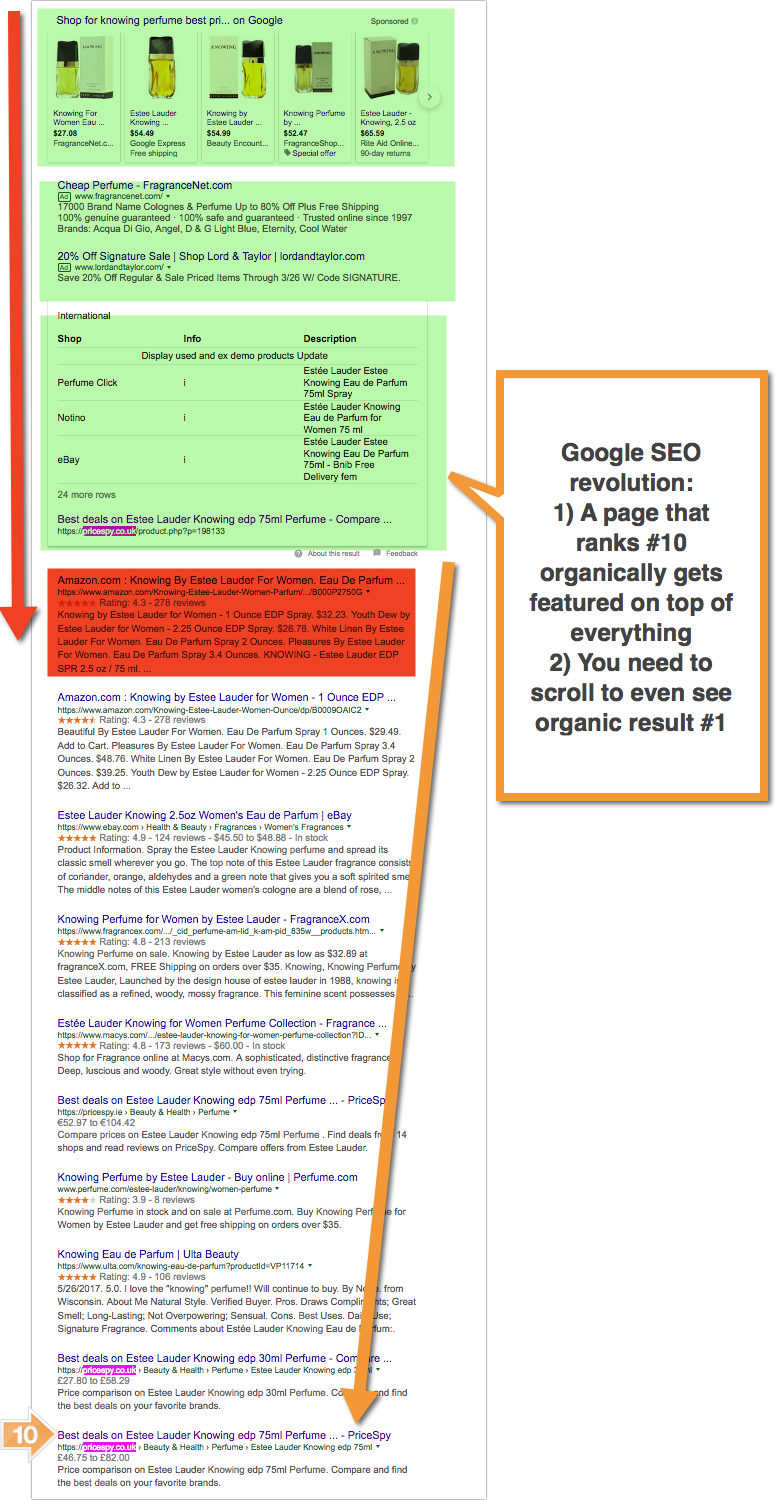
Notice how much scrolling it would take to even see the No. 1 result and how much more visible result No. 10 becomes when it’s moved to the featured snippet.
The steps to estimate the number of monthly clicks include:
- Learn from Ahrefs how many clicks search results tend to get.
- Estimate how many clicks the top position may be getting (i.e., 20% of overall clicks).
- Search for your keyword phrase in Google and estimate how many clicks those other elements may be stealing from organic search. (Plus, think about whether you can rank in those extra search elements too. Getting featured can be doable.)
TIP: Few resources can help you estimate how many clicks are stolen from organic results. The only study I am aware of is this one by Ahrefs. It shows that featured snippets may be stealing about 4% of clicks from Google’s SERPs and an additional 6.4% from the top result. Depending on visibility, you may assume local results, image carousels, etc., placed on top of search results might be stealing about a similar percentage of clicks.
Optimization in today’s search
Instead of focusing on the top results position, set goals based on the overall opportunities available on each SERP for your prime keywords.
- If it uses a featured snipped (or might in the future), target your content to snatch that opportunity (i.e., use subheads, definitions, question-and-answer format).
- If it includes a local pack, make sure your business is verified in Google and can be listed in local maps on top.
- If a section highlights Google images, focus on visual content.
- If it shows video results, create a better video to grab that opportunity.
Creating a single content asset to achieve search visibility is no longer enough because even the top position may not offer the level of visibility you need. You now must approach each search result page differently and come up with more tactics to rank in more sections within one set of search results.
Creating 1 #content asset to achieve search visibility is no longer enough, says @SEOSmarty. #SEO Click To Tweet
2. Researching (and optimizing) for things, not strings
Quite a few great keyword research tools will generate keyword suggestions for any given term. For the sake of an experiment, I use Ubersuggest simply because it’s open and free. I type a generic term connected to the example business – hiking – and the tool generates an overwhelming number of useful suggestions of pages to create to rank for those search queries.
A few years ago, search marketers needed a landing page for each variation of the keyword because search engines focused on exact keyword matching. If an exact keyword string didn’t appear in a page title, it would have had no chance to appear in search results.

Well, it’s different these days.
Google is smarter in interpreting user queries. What has changed? Google no longer focuses on so-called keyword strings. It now understands better what a user is searching and gives a variety of more relevant results.
Google no longer focuses on so-called keyword strings, says @SEOSmarty. #SEO Read more >> Click To Tweet
As an example, do a search for good hiking spots and see related terms in the results, like good hiking places and good hiking trails.
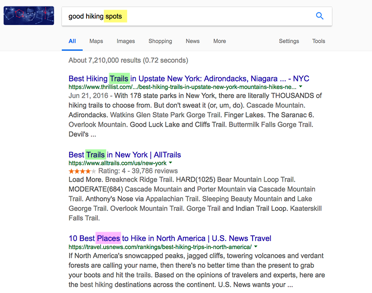
Note: In the image above, I cut off local-pack search results to make it more readable.
Instead of optimizing your site for all kinds of keyword phrases, you need to optimize for concepts.
Instead of optimizing your site for keyword phrases, you need to optimize for concepts, says @SEOSmarty. #SEO Click To Tweet
To identify relevant concepts, use Serpstat’s clustering feature. Instead of grouping your keywords by a common word like “spots” (as in our “good hiking spots” example) and losing important keywords like other clustering would, Serpstat analyzes Google’s search results to find overlapping URLs. With the hiking example in mind, here’s how Serpstat grouped all the related phrases, allowing us to clearly see synonymous phrases to include in the new content:
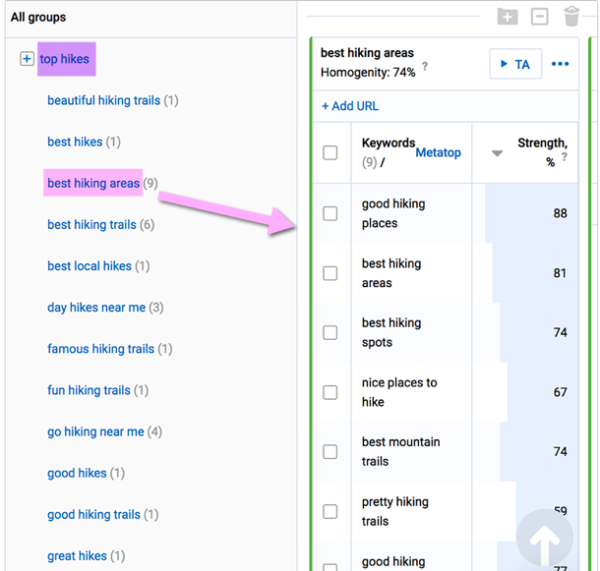
Clustering helps make sense of huge keyword lists by grouping them into topics and subtopics. These groups can help you structure your content, turning many of the subtopics into subheads.
Clustered keyword lists also help you create more in-depth and better structured content.
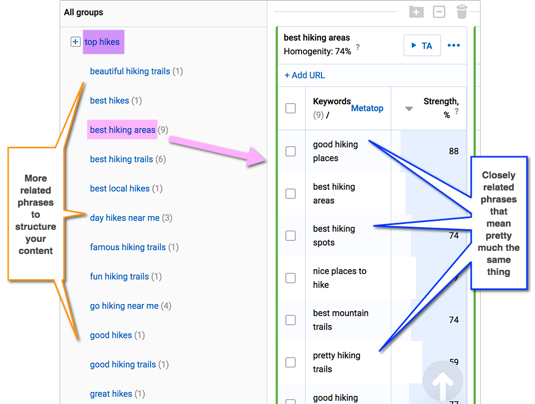
Conducting Google searches is another way to better understand how the search engine interprets concepts and identify what your content may be missing. Pay attention to as-you-type search suggestions because they offer clues to related and synonymous concepts hidden behind each query.
As-you-type search suggestions offer clues to related & synonymous concepts behind each query. @SEOSmarty Click To Tweet

3. Taking advantage of the most SEO insight ever available
Content marketers never have had as much insight into audience’s interests, struggles and intents as they do now. The variety and depth of tools is unprecedented.
All you really need to do is to test them and pick those that suit your needs. Some considerations:
- Three major SEO intelligence platforms – SEMRush, Ahrefs, and Serpstat – help identify keywords with less competition by including a keyword difficulty metric. They also help in identifying keyword intent.
- A few text-analysis and natural-language-processing tools like Watson™ Natural Language Understanding can extract entities, categories, and concepts from any piece of content.
- Social media networks and tools provide keyword analytics opportunities to research natural language, trends, real-time keyword context, and more. A variety of non-SEO tools still give you a good insight into keywords. For example, Postchup gives insight into related Instagram hashtags – related concepts to cover in your content. It also provides sentiment analysis and shows which objects appear on those Instagram updates, which can help you make informed visual marketing decisions.
Use a tool like @postchup to help you make informed visual #marketing decisions, says @SEOSmarty. #Instagram Click To Tweet
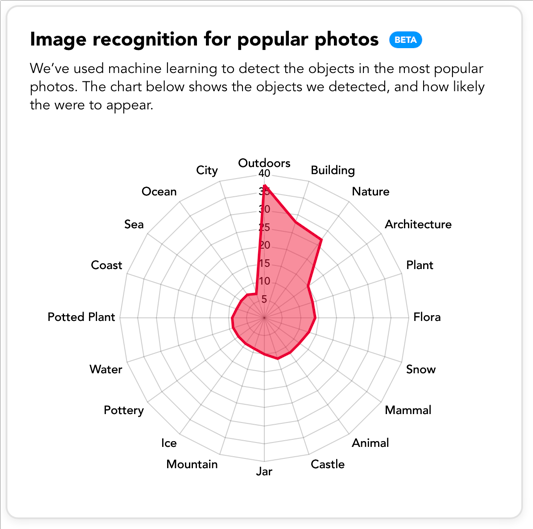
What’s in your keyword research toolkit this year? Please share in the comments.
Please note: All tools included in our blog posts are suggested by authors, not the CMI editorial team. No one post can provide all relevant tools in the space. Feel free to include additional tools in the comments (from your company or ones that you have used).
One of the keys to any content marketing program is learning about all the related concepts and opportunities. No need to do a keyword search for that – sign up today for Content Marketing World for lessons in real life. Use code BLOG100 to save $100.
Cover image by Joseph Kalinowski/Content Marketing Institute